From "Nightmare on Elm Street" to "Miracle on 34th Street"
Make Diversity the Main Ingredient
First and foremost, we must learn from the protests for social justice and the disheartening violence in their aftermath. Cultivating diversity, in terms of both who uses the street and in how the street is used, cannot be viewed as the frosting on the cake – it is the cake itself. Without diversity, we cannot create resilient social patterns that stand the test of time. Accommodating genuine, authentic social diversity is a moral imperative that leads to tremendous social and economic rewards. By designing streets and public spaces that are truly diverse, we increase our resilience to social, economic, and political disruptions.
Redefine “Complete Streets” to Prioritize Social and Economic Activity
Second, we must recognize that so-called “complete streets” policies have successfully let to much better circulation, yet have failed to adequately address the role of streets in contributing to social and economic change. It is time to reverse the priorities – the top priority for neighborhood main streets must be social and economic vitality. This means rewriting standards and regulations for the design of main streets, even if it means lessening priorities for circulation. Put another way, while we have many standards for circulation focused on safety and efficiency, we need equally strong standards to promote social and economic activity. These standards should not be national, or even regional – they should be tailored directly for each neighborhood or district main street.
Celebrate Neighborhood Main Streets
Third, as part of an increase in diversity and social and economic activity, we must rebrand our main streets with celebrations and spectacles that make them memorable and integral to the character of each community. Over time, as more and more residents and businesses experience such events, they will become a mainstay of the community and lead to more sustainable and diverse participants.
Treat Main Streets as Community-Wide Resources
Fourth and foremost, these changes are not free, simple, or easy to manage. Many national and regional organizations have, for decades, promoted downtowns, main streets, and business districts throughout our towns, villages, and cities. These efforts, while well-intended, have never been enough to foster their desired results. Planners must help propose budgets, operating procedures, and management tasks for each main street. Here, too, management and resources must be tailored to local conditions, as an effective approach on one nearby main street may not work in an adjoining neighborhood. There are too many differences in physical conditions, traffic patterns, social demographics, and economic markets to expect the same approach to work everywhere. Only customized, on-the-ground, local solutions will bring long-lasting success to our streets.
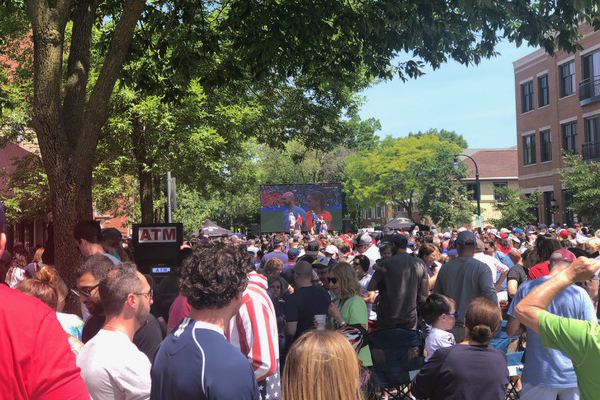
CELEBRATION: Almost one thousand residents gathered to watch the U.S. Women's National Soccer Team win the world cup – not in an arena with box seats, tickets, and concessions, but on the street with local restaurants, food trucks, and standing room only.

HARLEYS ON THE STREET: When Harley Davidson celebrated its one hundredth anniversary, Milwaukee’s Brady Street became a spectacular place. Riders from all over North America (and the world) shared this stage with locals in an unforgettable, unscripted, unprogrammed, safe, spontaneous street event. It could not have happened in any other place.
What More Can Planners Do?
Fostering a positive resurgence in our neighborhood main streets requires across-the-board changes in planning techniques and services. While zoning codes and comprehensive plans must change, these ordinances often offer high-level, abstract recommendations that never actually reach down to pragmatic impactful changes. Planners must work with Departments of Public Works, Business Improvement Districts, Parks Departments, and other municipal agencies to make the changes work. In the same way that we focus intently on schools, parks, new libraries, utilities, and circulation, we must also consider neighborhood main streets as a special community facility that requires public attention and resources.
Ease Regulations in Favor of Innovation
Planners can propose main street standards that maximize opportunities for social and economic activity. These standards might include business-friendly parking, increased pedestrian prioritization (even when congestion may occur), and more open signage regulations. At the same time, local municipalities should subsidize maintenance and repair budgets and offer grants and loans to support capital and operating expenses for businesses.
Promote the Street as a Mission, Not Just a Market
As more retail is operated through online ordering and delivery, main streets need to engage more in the types of high-activity services that bring people to the street, such as food and beverage services. However, local government often assumes that these services must be sustained solely by local markets, and that any subsidy would be unfair. We must switch this paradigm to view the main street as a public service in the same way that parks, trails, and libraries are public services. Planners can devise fair ways of providing such subsidies beyond conventional funding through business improvement districts.

FISH OUT OF WATER: Signs can also be art. Planners should foster innovative imagery and relax regulations. As streets rebuild, we must allow for creative use of commercial art. Planners should use more open rules that are “art” friendly and intended to add visual excitement to the street.
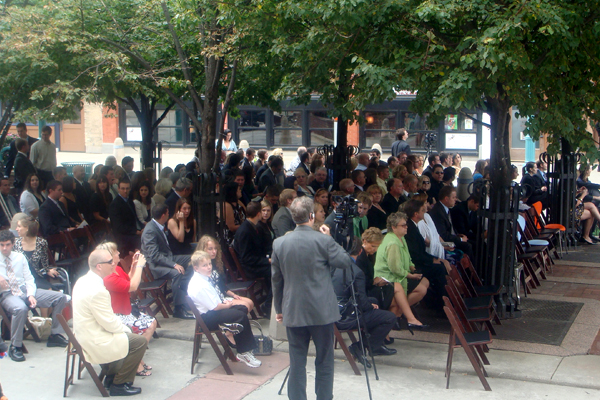
STREETS FOR FRIENDS AND FAMILIES: Personal events, like this wedding on Milwaukee’s Broadway in the Third Ward, show how a street becomes memorable and meaningful to a large diverse group of people. The street fulfills a cultural mission as well as providing an effective business location.
Improve Diversity Proactively
Too often diversity is viewed as something which will happen naturally as businesses grow and change. In practice, diversity require proactive planning and management. Street managers should actively recruit businesses that increase diversity in terms of their customer base and employee base. Here are some of our recommendations for techniques that can be used directly to increase social diversity:
Focus on Community Services More Than Retail
In many cases, local governments can add public and not-for-profit services along a main street. These services can provide information, support the arts, or add indoor educational or meeting rooms – in a very similar way that park pavilions have been providing services for generations
Sponsor Co-Locations
Just as local retail has embraced the idea of co-locations – the grocery store that sells clothing, or the copy center that provides mailboxes – so too can main streets. Here again, local governments should ease regulations for such services and, in some cases, subsidize new ideas.
Manage the Street as a Public Resource
Local governments manage all sorts of facilities and services from schools to libraries, from snowplowing to sewers. We need to place local main streets in the same bucket as these public services and hire people directly to operate the street in a way that promotes social and economic activity. At the top of the list, there should be a “street manager” to help coordinate traffic, circulation, and parking, including full traffic closings for events. The manager should be a full-time position who is the key contact for all problems and opportunities, with full access to governmental departments that must be used to ensure effective street utilization. Just as importantly, local government must provide strong support from other departments for contracts, communications, daily maintenance, and physical operations.
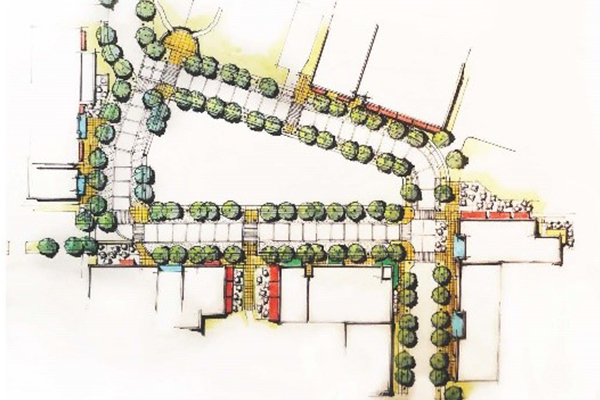
THE STREET: The most critical part of generating social and economic interaction is the street, not the park. Planning must ensure that all the details are all the critical pieces are created: space for tables, walking alignments, curbside lighting and trees, awning, signage, building entries, visual diversity.
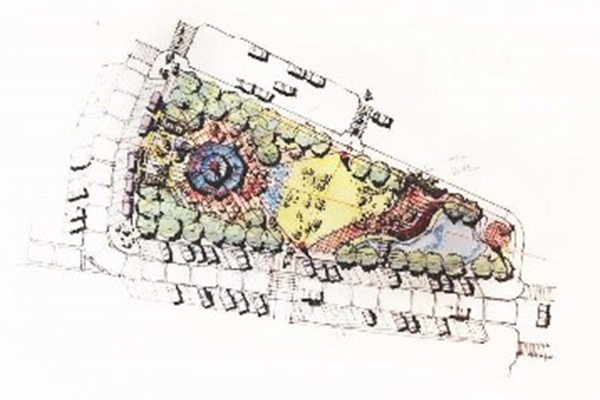
THE PARK: As the visual centerpiece, the park/plaza becomes the place for events, special programming and unique activities – but it cannot replace the essential foundation of the street as the locus for everyday.
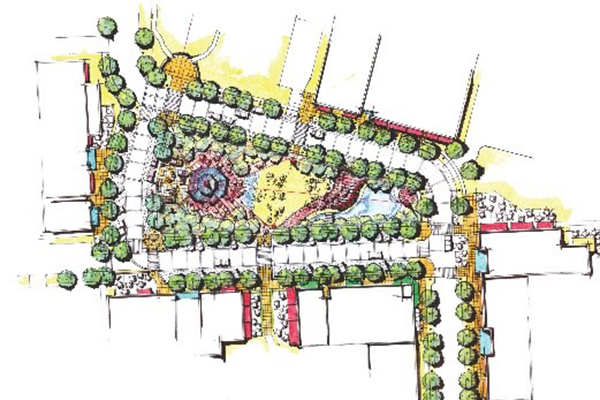
THE SYNTHESIS: This is one of GRAEF’s urban design plans which shows how the synthesis of the street and the park/plaza create a powerful solution that can generate year-round social and economic activity.